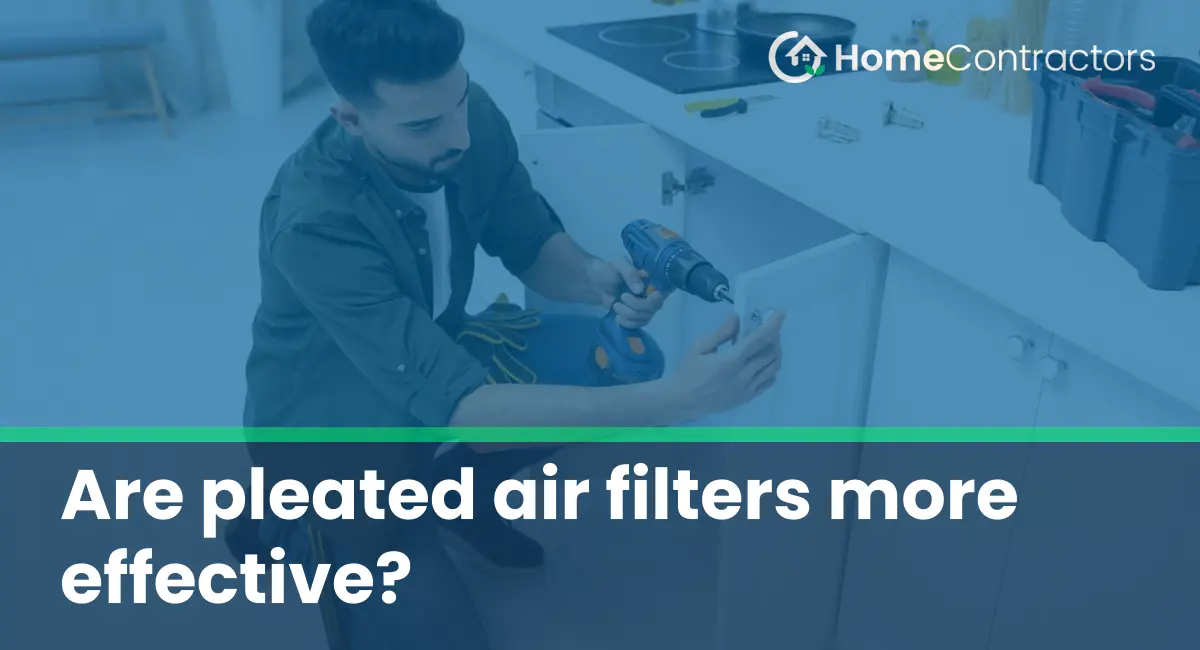When it comes to maintaining good indoor air quality and preventing airborne contaminants from circulating in your home, the type of air filter you choose for your HVAC system plays a crucial role. One popular option that is often recommended by experts is pleated air filters. These filters, as their name suggests, feature pleats or folds that help to increase the filter surface area. While many people claim that pleated air filters are more effective, it’s important to take a closer look at the potential benefits and drawbacks before making a decision.
Understanding Pleated Air Filters
Before we dive into whether pleated air filters are more effective or not, let’s understand what they actually are. Pleated air filters are made of a filter material that is folded or pleated back and forth numerous times. These pleats help to increase the surface area of the filter, allowing for greater filtration capacity. The material used in pleated air filters is usually synthetic fibers or fiberglass. This design enables the filter to trap a larger number of airborne particles, including dust, pollen, pet dander, and mold spores.
Enhanced Filtration Efficiency
One of the main advantages of pleated air filters is their enhanced filtration efficiency. The pleats in the filter provide a larger surface area, which allows for better particle capture. This means that a pleated air filter can trap a higher percentage of airborne contaminants, providing cleaner and healthier indoor air. Studies have shown that pleated air filters can capture particulate matter as small as 0.3 microns, which includes common allergens and some viruses.
Extended Filter Lifespan
Another benefit of pleated air filters is their extended lifespan compared to flat panel filters. Due to their larger surface area, pleated filters have a higher capacity for holding onto trapped particles before experiencing a significant drop in airflow. This means that pleated air filters can last longer before needing to be replaced, potentially saving you money and reducing maintenance frequency.
Improved Airflow and Energy Efficiency
Contrary to the misconception that pleated air filters restrict airflow, they can actually improve airflow in your HVAC system. The pleated design of these filters allows for more uniform air distribution and decreases the resistance to airflow. This can help your HVAC system operate more efficiently, leading to potential energy savings. Additionally, proper airflow is important for the overall performance and longevity of your HVAC system.
Considerations and Drawbacks
While pleated air filters offer numerous benefits, there are a few considerations to keep in mind. Firstly, pleated air filters tend to have a higher initial cost compared to flat panel filters. However, this cost can be offset by their longer lifespan and improved performance. Additionally, it’s important to choose the right MERV (Minimum Efficiency Reporting Value) rating for your needs. A higher MERV rating indicates a higher filtration efficiency, but it can also cause increased airflow resistance, especially for older HVAC systems.
Maintenance and Regular Replacement
Regardless of the type of air filter you choose, regular maintenance and replacement are crucial for optimum performance. Pleated air filters should be checked regularly and replaced according to the manufacturer’s recommendations. Over time, the particles trapped within the filter can accumulate, leading to decreased efficiency and potential strain on your HVAC system.
Pleated air filters offer several advantages that make them a popular choice among homeowners and HVAC professionals. Their enhanced filtration efficiency, extended lifespan, improved airflow, and potential energy savings are all factors to consider when deciding which air filter to use. However, it’s important to choose a pleated air filter with an appropriate MERV rating and adhere to regular maintenance and replacement schedules to ensure optimal performance and indoor air quality in your home.
